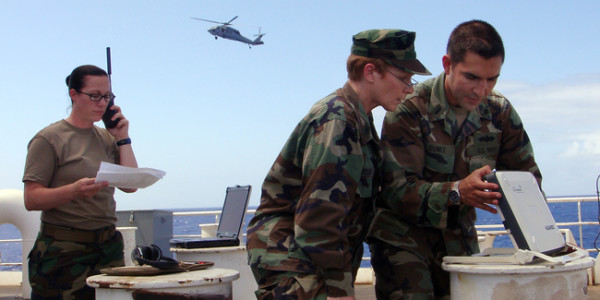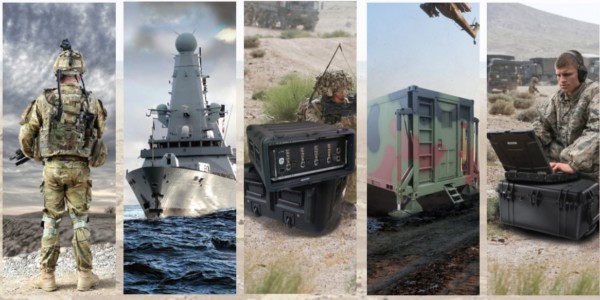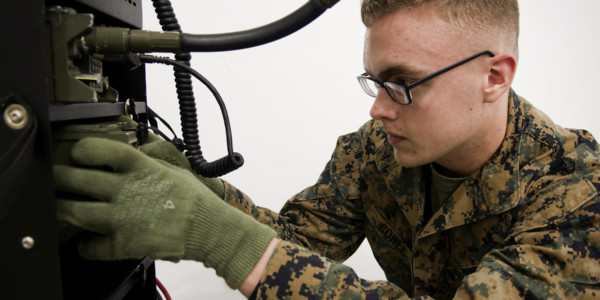
Successful Strategies for Bridging the COTS/MOTS Divide
Understanding the requirements
Military applications often suffer from the challenges derived from an appetite to employ the latest generation of hardware and achieve the best performance level possible. This appetite is typically driven by an expectation that by their deployment date, technology platforms are falling behind the benchmarks set by commercial solutions and diminishing in the advantages they offer.

Asking the right questions…
That is not to say that use of commercial hardware in an environment it was never intended for is not without its challenges, far from it. Designers of COTS equipment do not to account for extremes of environment, temperature, humidity, IP rating, shock, vibration, signal screening, cable separation, power conditioning, application/site-specific installation requirements. So with this in mind, how do you utilise COTS components in military applications without falling foul of elevated and unpredictable failure rates and risk of failure at critical times? How do you ensure the equipment arrives where it needs to be, and in an operational state? And how do you ensure that during operation it provides the performance required to deliver the desired outcome for the application?
Put simply, if you assume that all commercial equipment can be leveraged in demanding applications but will have a higher attrition rate, you may be able to deliver the performance level at a cost. You may also benefit from a commercial saving, but will almost certainly encounter unpredictable failures stemming from factors the equipment has not been designed to be resilient to.
While it may not be possible to arbitrarily exchange MOTS functions with COTS equipment but a need remains to do so to leverage the performance and cost models available from these products, can anything be done? Don’t despair. Experts exist that are not only experienced in pushing the commercial equipment to its limits, but also in taking the equipment beyond the limits originally envisioned by the manufacturer without reducing operational life or reliability.
In fact, it is often possible to go further than simply maintaining the OEM reliability by exceeding it through taking additional protective measures with the equipment, its subassembly or cabinet.

Making modifications
In larger installations, it may even be possible to resolve the challenges through isolation and protective measures of the local environment as a whole. However, typically this environment is subject to a greater diversity of housed applications and solution vendors to support multiple applications. As a result, agreement and organisation of such solutions can be complex.
Given the assumption that, in all likelihood, the original provider does not have control of the end-user’s environment or the design of the room the equipment will operate from, we can also assume that the protection needs to be provided through a combination of approaches. Through a hybrid approach, a micro-climate can be created that minimises the modification needed to leverage the COTS hardware without sacrificing reliability or incurring runaway costs.
From a hardware perspective, it is often – but not always – possible to ruggedise commercial hardware for use in demanding environments by partnering with companies that have trusted relationships with the supply chain. You can usually do this without impact the warranty, too. Modification of the commercial equipment for suitability of operation directly in this environment is typically more cost-effective on single or multiple small scale hardware implementations where the equipment will be contained within one or more equipment racks. Unfortunately, as the volume of equipment increases, the cost per unit for the customisations remains static and so for larger programmes or large equipment volumes, modifying the equipment becomes less cost-effective.

Successful strategies
When we look at large scale or large volume programmes, we can take two additional approaches. For large scale programmes that include many small scale implementations, we can look at revising the equipment design or repackaging solutions to optimize and productionise them for volume manufacture. This will provide a balance of high speed build times with minimised modification costs, and as the overall volume increases, will secure a more cost-effective solution when compared to modifying existing equipment on a case by case basis.
The second approach to volume opportunities is best used where the number of implementations is low but the volume of equipment installed is high. As such, it will warrant greater development to leverage improvements of performance and infrastructure or equipment dependency costs. For this scenario, the approach best aligned to needs would be to work with a partner to define a bespoke solution that uses commercial components from multiple vendors. This will unlock the best from each element and bring them together into a product that secures the advantages of commercial performance while being suitably protected to endure the challenges of its environment.
There are, of course, other possibilities and avenues available that will enable the use of commercial hardware. However, the additional options tend to require one of two things. This can be a fundamental change in the environment through the use of a protected building, shelter or room, or a change in application scope and architecture that places the equipment into a less hostile environment.
Captec – like many defence computing specialists – work to resolve customer challenges and engineer solutions that enable operations and deployable capabilities. Providing deployable equipment and shelters tailored to the needs of the end-user, application and our customers ensures the benefits of the COTS hardware and bespoke military solutions are unlocked and used to support demanding applications.

